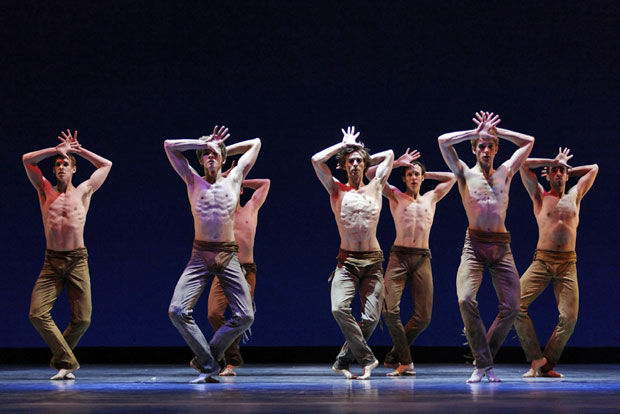
© Costin Radu. (Click image for larger version)
Royal Danish Ballet
Dans2Go: Chroma, The Unsung, La Bayadère – The Kingdom of the Shades
Royal Theatre, Copenhagen
28 February and 1 March 2013
kglteater.dk
The Royal Danish Ballet’s Dans2Go, year 3. As previously, the aim is to give newcomers a taste of different types of dance, at low prices (slightly higher than last year but still only about £11 for any seat in the house if you’re young and/or a student)); the difference this year is that the 2 ballets + 1 pas de deux format has developed into a proper triple bill – in fact, the only one the company is doing this season. And it was certainly varied: Wayne McGregor’s Chroma from last season’s repertoire, José Limón’s The Unsung, which featured in a men-only programme a couple of years ago, and the Shades scene from the company’s new production of La Bayadère. None of them could be described as ‘run of the mill’ and it’s interesting to consider which of them, to someone with no preconceptions about what theatre dance should be, would seem the least strange.
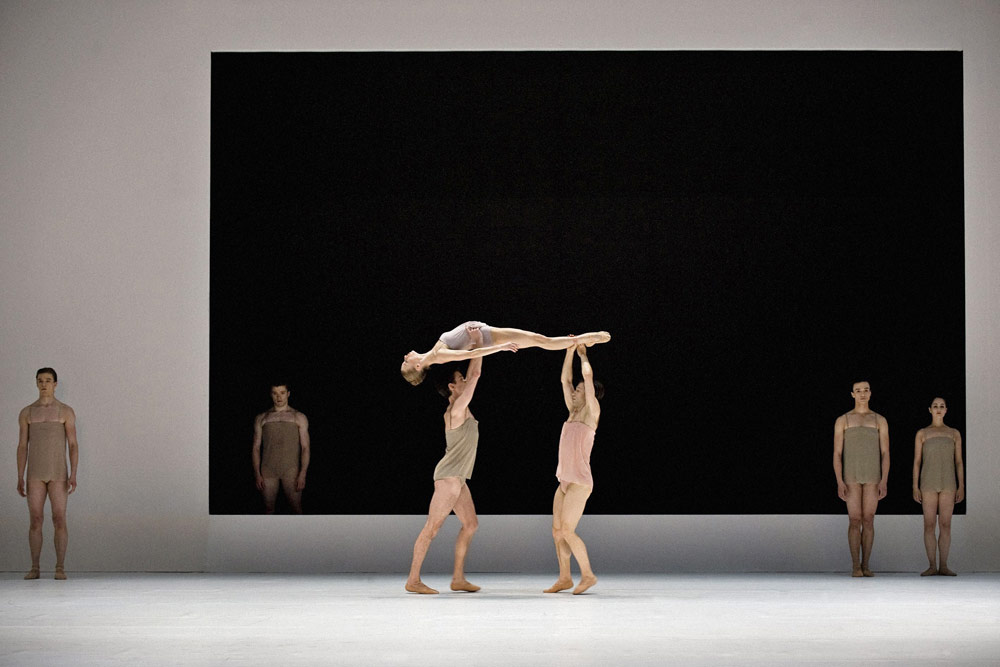
© Henrik Stenberg. (Click image for larger version)
Each section is preceded by a two or three minute film of some of the dancers talking about the piece we’re about to see: the most enthusiastic, without a doubt, were the two young men describing how they felt about dancing Chroma. Slight apprehension when they first saw film of it had turned into passionate commitment when they started to work on it, and now they couldn’t wait to get out on the stage and dance it. I saw the second cast, mostly drawn from the corps de ballet – a couple of them still only in their first year – and of course they didn’t match the Royal Ballet dancers who created these roles. (How could they?) They haven’t yet grown fully into the extremes of McGregor’s style and because of that the work looks less extraordinary: on the other hand, less time spent wondering ‘how do they DO that?’ leaves more time to take in the piece as a whole and I did not come away disappointed. And some of the dancers are already making the roles their own, in a different way: Benjamin Buza, super-confident and oozing attitude, could go into any cast, and Stephanie Chen Gundorph’s pas de deux with newly-promoted soloist Jonathan Chmelensky was also impressive.
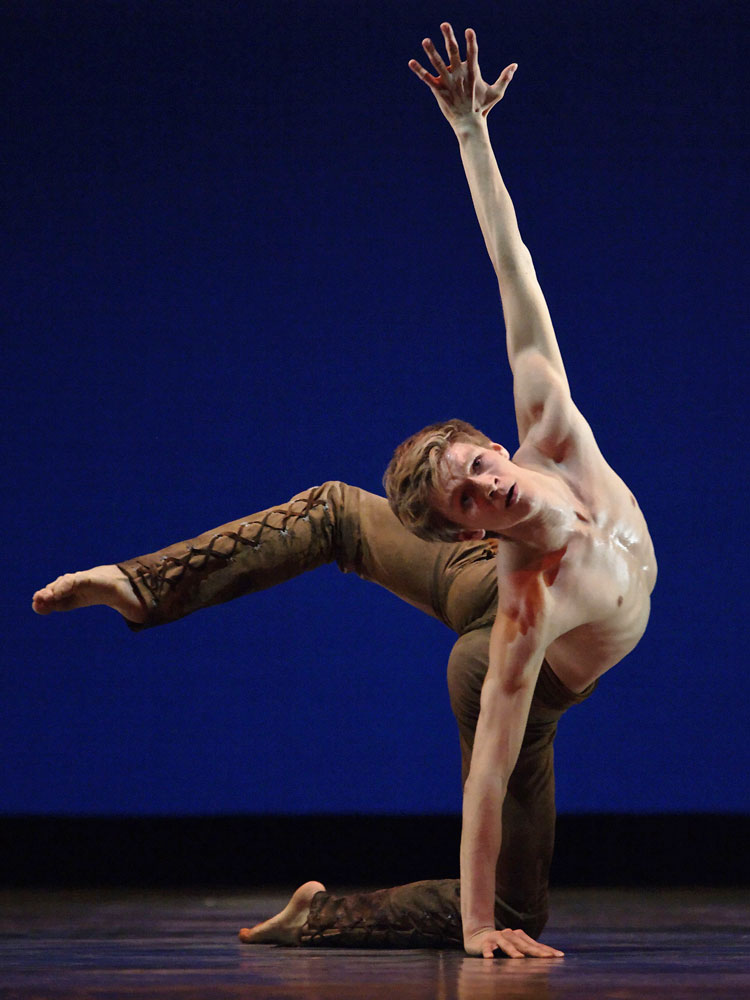
© Costin Radu. (Click image for larger version)
The Unsung is a challenging work for an occasion like this: a kind of rite, based perhaps on a native American ‘ghost dance’, it has no music and the series of long solos which follow the introductory ensemble for the cast of eight men need to be very strongly characterised if they are to hold the attention. When Limón created the piece each one of the men had a solo but I believe his company now only performs six or seven each time; the RDB showed six when they first danced it and during the course of this run they’ve cut that down to four, I assume as a result of audience reaction or feedback – tough on the dancers who lose their turn but perhaps understandable in this situation. The most experienced dancers brought the most to their roles – Nicolai Hansen and Fernando Mora in particular – but I was also glad to have the chance to see the young apprentice, Sebastian Haynes, far from over-awed by his role and definitely someone to watch out for in the future.
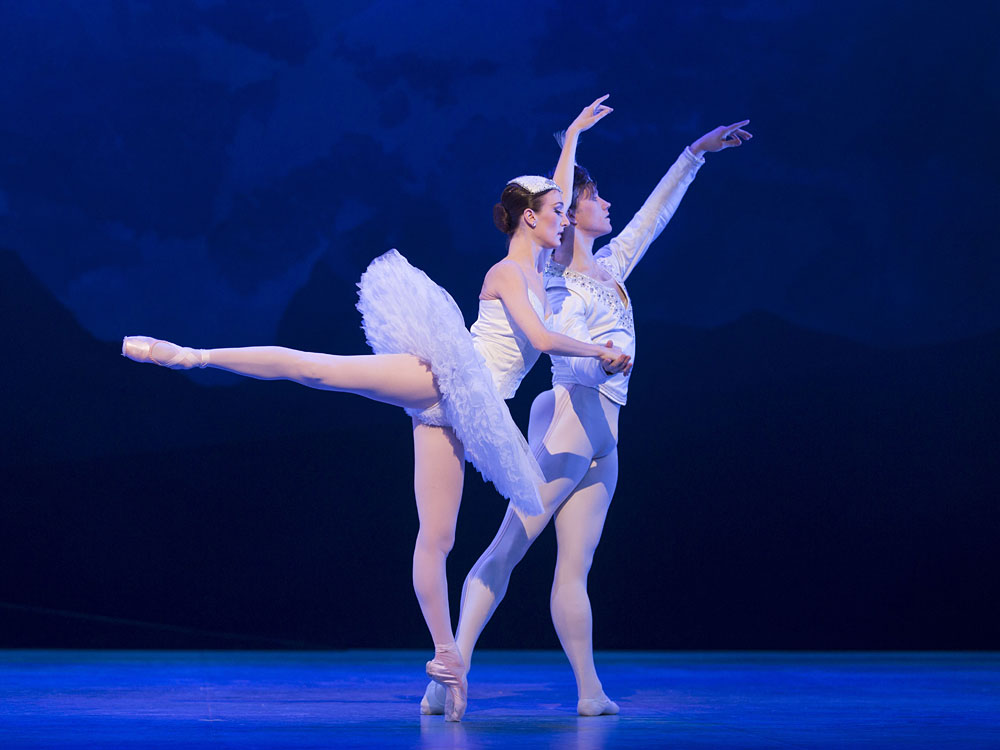
© Costin Radu. (Click image for larger version)
Presumably to avoid the expense of bringing in an orchestra for just one piece, the scene from Bayadère was danced to recorded music – a regrettable loss but bringing the unexpected pleasure of hearing the long harp introduction blasted out over the huge speakers needed for Chroma – it sounded wonderful. I’m very happy to see this act on its own – it doesn’t lose much even if you know the rest of the story and if you don’t it works perfectly well as a near-abstract piece. The corps de ballet wasn’t in quite the fine form they’d shown when the full ballet was staged earlier in the season, perhaps because they were trying out different dancers in the front rows – and in any case it must be hard work going through this exceptionally demanding routine four nights running. This was my first look at J’aime Crandall and Alban Lendorf in the leads – he as completely in command as we’ve come to expect, she so good in allegro passages that I really wish she could ‘give’ more in adagio and make it really sing. Hilary Guswiler’s Nikiya was also new to me: she’s looked on as one of the hopes for the future and is clearly very talented, but here she was concentrating so hard on her technique that she had nothing left for interpretation. Her Solor was Ulrik Birkkjær, more in control than when I saw him in the full-length piece a few months ago. Even when it’s less than perfectly performed, I still love this ballet, and it seemed to please the rest of the audience as well – this is probably most like what they’d been expecting, after all.

© Costin Radu. (Click image for larger version)
What worried me slightly about the whole programme was that it was all very , very serious: if you told someone there for the first time that this company is famous for its ‘joy in dancing’ they’d find it hard to believe. In the faces of the Chroma cast at their curtain calls, in Lendorf’s smile as he acknowledged his own applause, you could see real pleasure, but particularly in Bayadère I too often felt I was watching dancers fighting for perfection, out on the very limit of their ability. I would so happily forgive a few technical shortcomings if that let me feel that they were, at some level, enjoying what they do.









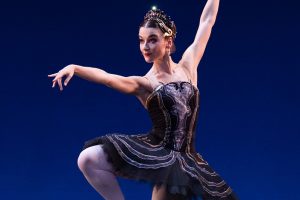

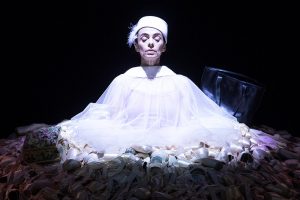
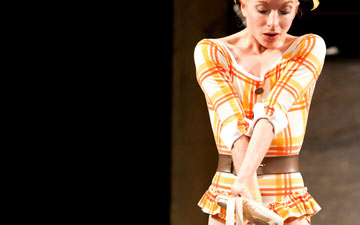

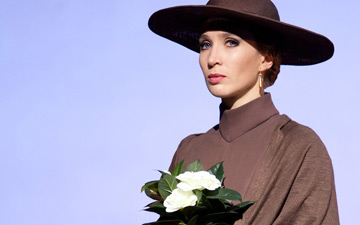
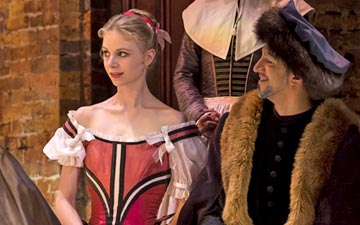

You must be logged in to post a comment.